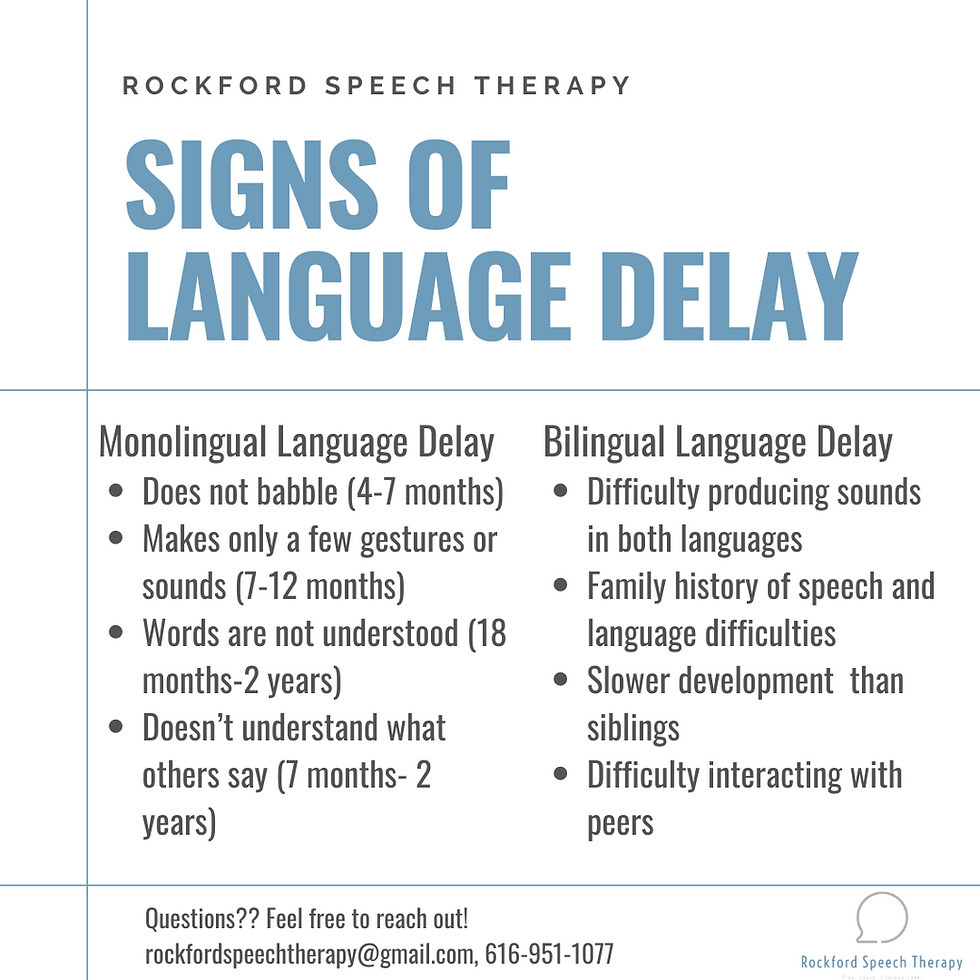Learning Two Languages: Simultaneous and Sequential Bilinguals
- Marissa Doletzky

- Jun 19, 2020
- 2 min read

When learning another language, children can learn them at different times and in many different ways. When we talk about the timeframe when a bilingual child learned a language we usually refer to them in two different ways: Simultaneous Bilingual and Sequential Bilingual.
Simultaneous Bilingual
When children learn languages as a Simultaneous Bilingual, they learn the languages at the same time and usually before the age of three, often right from birth. If the child’s exposure to the second language is frequent and sustained over the preschool and school-aged years, then the child would be considered a Simultaneous Bilingual.
If children are Simultaneous Bilinguals, they should follow the same speech development as their monolingual peers. I discussed milestones in a previous post: https://www.rockfordspeechtherapy.com/post/monolingual-and-bilingual-milestones-for-any-language
This post discusses the milestones seen for monolingual and bilingual children in any language. In the United States, a common language for children to be bilingual in is Spanish. Below are some milestones that are common in English-Spanish Bilingual children:




As you can see, these skills are ones that we should expect Spanish-English Bilinguals to achieve at around the same time.
Sequential Bilinguals
When children learn a language after the age of three and after their first language has been established, they are considered a Sequential Bilingual. Many times, sequential learners are those we call English Language Learners. Typically, these children are the ones who begin learning English once they start school, either in Preschool or Kindergarten. Children who learn a language after their first language has been established do not follow the same milestones as monolingual or simultaneous bilinguals. Determining whether a child who is a sequential bilingual learner has a language disorder is more complicated than determining a language disorder in a monolingual child. Generally, a Sequential Bilingual child requires more in-depth assessment to determine if the child needs support from a speech-language pathologist.
Because languages can be learned at different times and in different ways, knowing how and when a child learned another language is important in determining whether a child has a language disorder or not. If you’re concerned about your child’s language, feel free to reach out!
Marissa Doletzky MS, CCC-SLP
Owner/Speech-Language Pathologist
616-951-1077







Комментарии